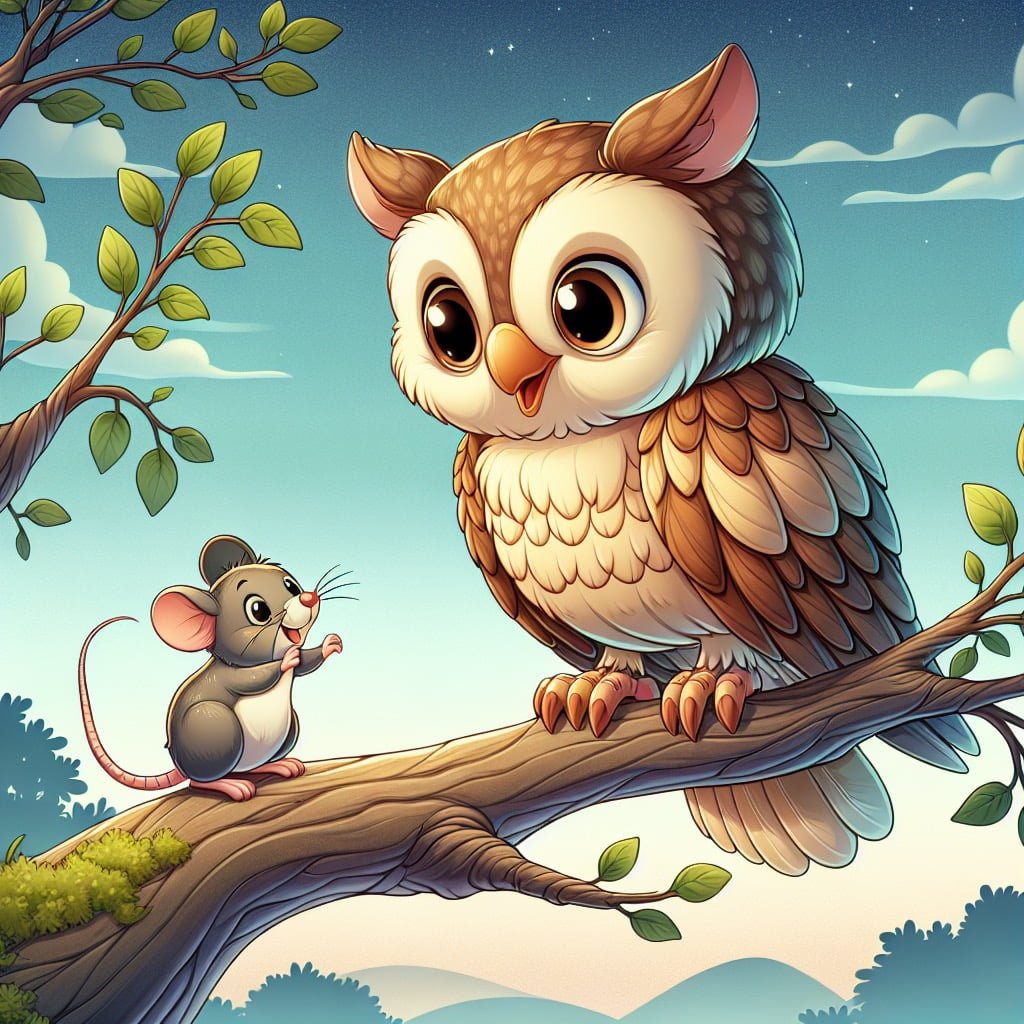Welcome to a captivating journey through the world of Bird Facts For Kids! This blog post is packed with intriguing information about the incredible abilities and behaviors of our feathered friends. Discover the fascinating world of birds as we delve into topics like their remarkable vision, unique colors, impressive flying skills, and extraordinary adaptations. From penguins proposing with pebbles to owls rotating their heads, each fact will spark curiosity and wonder in readers of all ages. Join us as we explore the diverse and wondrous traits of birds, inspiring a lifelong fascination with the avian world. Get ready to be amazed by the amazing feats and captivating facts about these extraordinary creatures!
Bird Facts For Kids
1. Birds Can See More Colors Than Humans

For younger kids: Birds can see colors we can’t even imagine!
For older kids: Birds have a greater range of cone cells in their eyes, allowing them to see ultraviolet light and a wider spectrum of colors than humans.
Detailed explanation:Birds have the incredible ability to see a wider range of colors than humans can perceive. This is due to the fact that birds have four types of color cones in their eyes, compared to the three types of color cones that humans possess. These cones are sensitive to different wavelengths of light, allowing birds to see ultraviolet light as well as a broader spectrum of colors. This means that birds can see colors that are completely invisible to the human eye, giving them a much richer visual experience of the world around them.
Birds’ ability to see ultraviolet light is particularly fascinating. Many bird species have feathers that reflect ultraviolet light, which is invisible to humans but appears as distinct colors and patterns to birds. This ultraviolet reflection plays a crucial role in communication and mate selection among birds, as it allows them to display vibrant and intricate plumage that is only visible to other birds.
In addition to seeing a wider range of colors, birds also have a higher visual acuity than humans. Birds have a higher concentration of photoreceptors in their retinas, allowing them to detect fine details and movements with much greater precision. This heightened visual acuity is essential for birds when flying, finding food, and avoiding predators in their natural habitats.
Overall, the extraordinary color vision of birds is a testament to the diversity and complexity of the natural world. By studying bird vision, scientists can gain valuable insights into the evolution of color vision and its role in the behavior and ecology of different bird species. Bird Facts For Kids are not only fascinating but also provide a window into the amazing adaptations that allow birds to thrive in diverse environments.
Bird Facts For Kids
2. A Flamingo’s Pink Color Comes from its Diet

For younger kids: Flamingos turn pink because they eat special food!
For older kids: Flamingos get their distinctive pink color from the beta-carotene in their diet of brine shrimp and blue-green algae.
Detailed explanation:Flamingos are known for their distinctive pink coloration, which comes from the food they eat. These elegant birds get their vibrant hue from pigments in the algae and crustaceans they consume, such as shrimp and other small aquatic creatures. The pigments in these foods, called carotenoids, are broken down in the flamingo’s digestive system and then absorbed into their bloodstream. The carotenoids are then deposited in the flamingo’s feathers, skin, and even their beaks, giving them their characteristic pink color.
This process of obtaining their pink color from their diet is crucial for flamingos to maintain their health and appearance. Without a diet rich in carotenoids, flamingos would not be able to maintain their bright pink colors. In fact, the intensity of a flamingo’s pink color can be a good indicator of its overall health and diet quality. Flamingos that are pale or white may be lacking in essential carotenoids, which could indicate a poor diet or health issues.
Overall, the fact that a flamingo’s pink color comes from its diet is a fascinating example of how the food we eat can impact not only our health but also our physical appearance. By understanding this aspect of flamingo biology, we can appreciate the intricate connections between diet, pigmentation, and overall well-being in these beautiful birds. Next time you see a flamingo gracefully wading in the water, remember the important role that its diet plays in giving it that iconic pink color.
In conclusion, learning about bird facts for kids can be both educational and entertaining, especially when highlighting interesting behaviors like how flamingos get their pink color from their diet.
Bird Facts For Kids
3. Hummingbirds Can Fly Backwards

For younger kids: Hummingbirds are the only birds that can fly in reverse!
For older kids: With a unique ball-and-socket joint in their wings, hummingbirds can rotate them 180 degrees and fly in any direction, including backward.
Detailed explanation:Hummingbirds are not only known for their vibrant colors and incredible speed; they are also known for their unique ability to fly backwards. This behavior sets them apart from other birds and showcases their agility and versatility in flight. So how do these tiny creatures manage to fly in reverse?
One of the key adaptations that allow hummingbirds to fly backwards is their specialized wing structure. Unlike most birds, hummingbirds have the ability to rotate their wings in a figure-eight motion. This motion allows them to generate lift on both the upstroke and the downstroke, giving them the power to hover effortlessly in one spot and even fly backwards. This unique wing motion is essential for navigating through dense foliage in search of nectar-rich flowers.
In addition, hummingbirds have highly developed visual capabilities that aid in their backward flight. Their keen eyesight and ability to perceive motion allow them to quickly react to changes in their environment, whether they are moving forward, backward, or hovering in place. This exceptional visual acuity is crucial for avoiding obstacles and predators while flying in reverse.
Overall, the ability of hummingbirds to fly backwards is a fascinating example of their remarkable agility and adaptability in flight. By understanding the specialized wing structure and visual capabilities of these remarkable birds, we can gain a greater appreciation for the unique behaviors and characteristics that make hummingbirds such fascinating creatures to observe. So, next time you see a hummingbird zipping around your backyard, take a moment to marvel at their impressive backward flying skills. These Bird Facts For Kids are sure to captivate children and adults alike.
Bird Facts For Kids
4. The Andean Condor Has the Widest Wingspan

For younger kids: The Andean Condor has really, really big wings!
For older kids: The Andean Condor has the widest wingspan of any land bird, reaching up to 10.5 feet, allowing it to soar gracefully in the skies.
Detailed explanation:Bird Facts For Kids: The Andean Condor is truly a marvel of nature, especially when it comes to its wingspan. With a wingspan that can reach up to 10.5 feet, the Andean Condor holds the title for the widest wingspan of any bird in the world. This impressive wingspan allows the Andean Condor to soar through the skies with grace and ease.
One of the reasons why the Andean Condor has such a wide wingspan is because of its unique flying habits. As a scavenger bird, the Andean Condor spends a lot of its time soaring effortlessly high above the ground, using its keen eyesight to spot carrion below. Its wide wingspan allows it to catch thermals and stay aloft for long periods of time without expending too much energy.
Another interesting fact about the Andean Condor is that it is one of the heaviest flying birds in the world. Despite its large size and weight, the Andean Condor is still able to achieve impressive feats of flight, thanks in part to its wide wingspan. This bird is truly a master of the skies, using its wingspan to its advantage to navigate the Andes Mountains where it makes its home.
Overall, the Andean Condor serves as an excellent example of the incredible diversity and adaptability of birds in the natural world. Its wide wingspan is just one of the many fascinating Bird Facts For Kids that showcase the amazing abilities of our feathered friends.
Bird Facts For Kids
5. Penguins Propose with a Pebble

For younger kids: Penguins give their special friend a rock to show they like them!
For older kids: Male penguins present a pebble to their chosen mate as a courtship ritual, symbolizing their intention to build a nest together.
Detailed explanation:Penguins are known for their interesting mating behaviors, and one of the most charming rituals is the male penguin’s way of proposing to the female. Yes, you read that right – penguins propose with a pebble! This behavior is often observed in species such as the Gentoo penguin and the Adelie penguin.
During the mating season, male penguins will search for the perfect pebble to present to their chosen female. These pebbles are carefully selected based on their size, shape, and color. Once the male has found the ideal pebble, he will waddle over to the female and drop it at her feet as a gesture of his affection and commitment.
The presenting of a pebble is not just a random behavior – it actually serves a practical purpose. Female penguins use these pebbles to build their nests, so by offering a pebble, the male is providing a valuable resource for their future family. This act of courtship showcases the male penguin’s ability to provide for his mate and potential offspring.
This unique behavior is not only fascinating to witness but also highlights the complex social dynamics and communication within penguin colonies. It also provides a wonderful opportunity to teach children about the diverse and interesting world of birds. By sharing bird facts for kids, we can inspire a love for nature and wildlife conservation from a young age. Next time you see a penguin with a pebble, remember that it’s not just a rock – it’s a symbol of love and commitment in the animal kingdom.
Bird Facts For Kids
6. Owls Can Rotate Their Heads 270 Degrees

For younger kids: Owls can turn their heads all the way around!
For older kids: Owls have 14 neck vertebrae, compared to the 7 in humans, allowing them to rotate their heads almost 3/4 of the way around without moving their body.
Detailed explanation:Owls are fascinating creatures known for their unique abilities, one of which is their impressive neck flexibility. These remarkable birds are able to rotate their heads up to 270 degrees, allowing them to look over their shoulders without moving their bodies. This exceptional feat is made possible by the design of the owl’s neck, which consists of 14 vertebrae compared to the typical seven found in most birds.
Bird Facts For Kids Owls have evolved specialized adaptations that allow them to rotate their heads to such an extreme degree. One of these adaptations is the presence of extra arteries at the base of their necks, which supply blood to the brain and eyes even when the neck is twisted. Additionally, owls have unique bone structures and muscles in their necks that enable them to swivel their heads with ease.
This incredible ability is essential for owls, as it allows them to scan their surroundings for potential prey without making any sudden movements that could alert their targets. By being able to rotate their heads nearly all the way around, owls have a wider field of vision, making them highly effective hunters.
In addition to their impressive head rotation, owls also have other remarkable adaptations that make them fascinating subjects for study. Bird Facts For Kids Owls have specialized feathers that allow them to fly silently, making them stealthy predators. They also have excellent hearing and eyesight, further enhancing their hunting skills.
In conclusion, the fact that owls can rotate their heads 270 degrees showcases the incredible adaptations that these birds possess. Their ability to twist their necks to such an extreme degree is just one of the many remarkable features that make owls such captivating creatures.
Bird Facts For Kids
7. Peacocks Can Fly Despite Their Long Tail Feathers

For younger kids: Even with their long feathers, peacocks can still fly!
For older kids: Despite their extravagant tail feathers, male peacocks are capable of flying short distances and use their colorful plumage for courtship displays.
Detailed explanation:Peacocks are known for their vibrant and extravagant plumage, especially their long and colorful tail feathers. Many people may assume that these feathers would hinder their ability to fly, but in reality, peacocks are highly capable flyers.
One of the most important Bird Facts For Kids to understand is that peacocks have strong, muscular bodies that allow them to take flight despite the added weight and drag of their tail feathers. These tail feathers, or “trains,” are actually used by peacocks during courtship displays to attract mates, rather than for flight. In fact, the male peacock will raise and fan out his tail feathers in a spectacular display when trying to attract a female.
When it comes time to fly, peacocks will use their powerful wings to lift themselves off the ground and soar through the air. They are able to achieve impressive heights and distances when flying, even with their long and ornate tail feathers trailing behind them.
Overall, peacocks are not only stunningly beautiful birds, but also skilled flyers. It is important to remember that appearances can be deceiving, and that these birds are able to overcome the challenges posed by their extravagant plumage in order to take flight. Learning about Bird Facts For Kids, such as the capabilities of peacocks, can help us better appreciate and understand the fascinating world of birds.
Bird Facts For Kids
8. Macaws Can Mimic Human Speech

For younger kids: Macaws can talk like people!
For older kids: Macaws are known for their ability to mimic human speech and sounds, demonstrating a high level of intelligence and vocal dexterity.
Detailed explanation:Macaws are incredibly fascinating birds known for their vibrant colors and impressive vocal abilities. One of the most intriguing abilities of macaws is their talent for mimicking human speech. This skill is not unique to macaws, but it is certainly one of the most impressive examples of vocal mimicry in the bird world.
Bird Facts For Kids show that, like other parrots, macaws are highly intelligent and social creatures. They have complex vocal cords that allow them to imitate a wide range of sounds, including words and phrases spoken by humans. Macaws have been known to mimic different accents, tones, and even emotions, making their vocalizations incredibly captivating to listen to.
In the wild, macaws use their vocal mimicry skills for communication with other birds in their flock. They can also mimic the sounds of other animals in their environment as a way of staying alert and aware of potential dangers. In captivity, macaws often pick up human speech and sounds from their surroundings, which can lead to them repeating words and phrases they hear on a regular basis.
It is important to note that not all macaws will learn to mimic human speech, as this ability can vary among individuals. However, those that do have this skill can provide endless entertainment for their human companions. Overall, the fact that macaws can mimic human speech is a testament to their intelligence and adaptability as one of the most fascinating bird species in the world.
Bird Facts For Kids
9. The Arctic Tern Has the Longest Migration

For younger kids: Arctic Terns travel really, really far every year!
For older kids: The Arctic Tern holds the record for the longest migration, traveling around 44,000 miles from its breeding grounds in the Arctic to its wintering location in the Antarctic and back.
Detailed explanation:One fascinating fact about the Arctic Tern is that it holds the record for the longest migration of any bird species. These incredible creatures travel an astonishing round-trip distance of over 70,000 kilometers each year as they move between their breeding grounds in the Arctic and their wintering grounds in the Antarctic. This annual migration is a truly remarkable feat of endurance and navigation.
Bird Facts For Kids indicate that Arctic Terns are able to undertake such a long journey thanks to their impressive physical adaptations. Their long wings and streamlined bodies help them to cover vast distances with minimal effort, while their keen eyesight allows them to navigate accurately over featureless oceanic expanses. Additionally, these birds have a specialized circulatory system that enables them to efficiently extract oxygen from the thin air at high altitudes during their migration.
During their migration, Arctic Terns face numerous challenges, including extreme weather conditions, predators, and the risk of exhaustion. However, these resilient birds have evolved clever strategies to overcome these obstacles. For example, they often travel in groups to reduce the energy expended during flight and take advantage of favorable wind patterns to aid their journey.
In conclusion, the Arctic Tern’s record-breaking migration is a testament to the remarkable abilities of migratory birds. By studying and understanding these incredible creatures, we can gain valuable insights into the complexities of the natural world and the importance of conservation efforts to protect species like the Arctic Tern for future generations.
Bird Facts For Kids
10. Swifts Spend Almost Their Entire Lives in the Air

For younger kids: Swifts hardly ever touch the ground!
For older kids: Swifts are aerial acrobats, spending almost their entire lives in flight, landing only to nest and raise their young. They even sleep and mate in mid-air!
Detailed explanation:Bird Facts For Kids: Swifts are truly remarkable birds that spend almost their entire lives in the air. These agile creatures are masterful fliers, able to stay aloft for days or even weeks at a time. They are known for their impressive aerial acrobatics, soaring and gliding effortlessly through the sky.
Swifts have long, slender wings and a streamlined body that are perfectly adapted for life on the wing. They are able to catch insects on the wing, feeding on the abundant aerial plankton that can be found high in the sky. Their diet consists mainly of insects such as flies, beetles, and ants, which they catch and eat in midair.
One of the most fascinating things about swifts is their ability to sleep while flying. These incredible birds have the ability to rest one half of their brain at a time, allowing them to continue flying while still getting the rest they need. This unique adaptation helps them conserve energy during their long flights.
Swifts are also known for their impressive migration patterns. They travel great distances each year, flying from their breeding grounds in Europe to their wintering grounds in Africa. This incredible journey takes them across vast stretches of land and sea, making them one of the most remarkable migratory birds in the world.
In conclusion, swifts are truly amazing birds that have adapted to a life spent almost entirely in the air. Their incredible flying abilities, unique sleep patterns, and impressive migration make them a fascinating subject for bird Facts For Kids.
Did You Know?
Some birds have incredible memories and can remember the exact locations of thousands of food storage sites, helping them survive through the seasons.
Summary of Bird Facts For Kids
“Discover the Wonders of Birds: Why Kids Should Learn More About these Fascinating Creatures”
Birds are more than just beautiful creatures that grace our skies – they are also incredibly fascinating beings that offer a wealth of learning opportunities for kids. By delving into the world of bird facts, children can not only expand their knowledge but also develop a deeper appreciation for the natural world around them.
Learning about birds can spark curiosity and wonder in young minds, encouraging them to ask questions, explore new concepts, and develop a sense of empathy and respect for all living creatures. From the amazing diversity of bird species to their unique behaviors and adaptations, there is no shortage of interesting facts for kids to discover.
Furthermore, studying birds can also teach children valuable lessons about the importance of conservation and environmental stewardship. By understanding the role that birds play in the ecosystem as pollinators, seed dispersers, and pest controllers, kids can gain a greater appreciation for the interconnectedness of all living things and the need to protect our planet’s biodiversity.
In conclusion, exploring bird facts is not only educational but also incredibly enriching for children. It opens up a world of wonder and discovery that can inspire a lifelong love for nature and wildlife. So, why not encourage your kids to learn more about these amazing creatures and watch as their curiosity and appreciation for the natural world soar to new heights?
Sources and additional information for Bird Facts For Kids
WikipediaBritannicaSan Diego Zoo KidsThe Smithsonian InstitutionDK Find Out!Australian MuseumWorld Wildlife FundThe Nature ConservancyAnimal PlanetMonterey Bay AquariumPBS NatureSmithsonian’s National Zoo & Conservation Biology InstituteWorld Wildlife FundAnimal Diversity Web (University of Michigan)IUCN Red List of Threatened SpeciesThe Cornell Lab of Ornithology – All About BirdsNational Audubon SocietyEncyclopedia of LifeSeaWorld Parks & EntertainmentAustralian Museum – AnimalsEncyclopedia of Life




